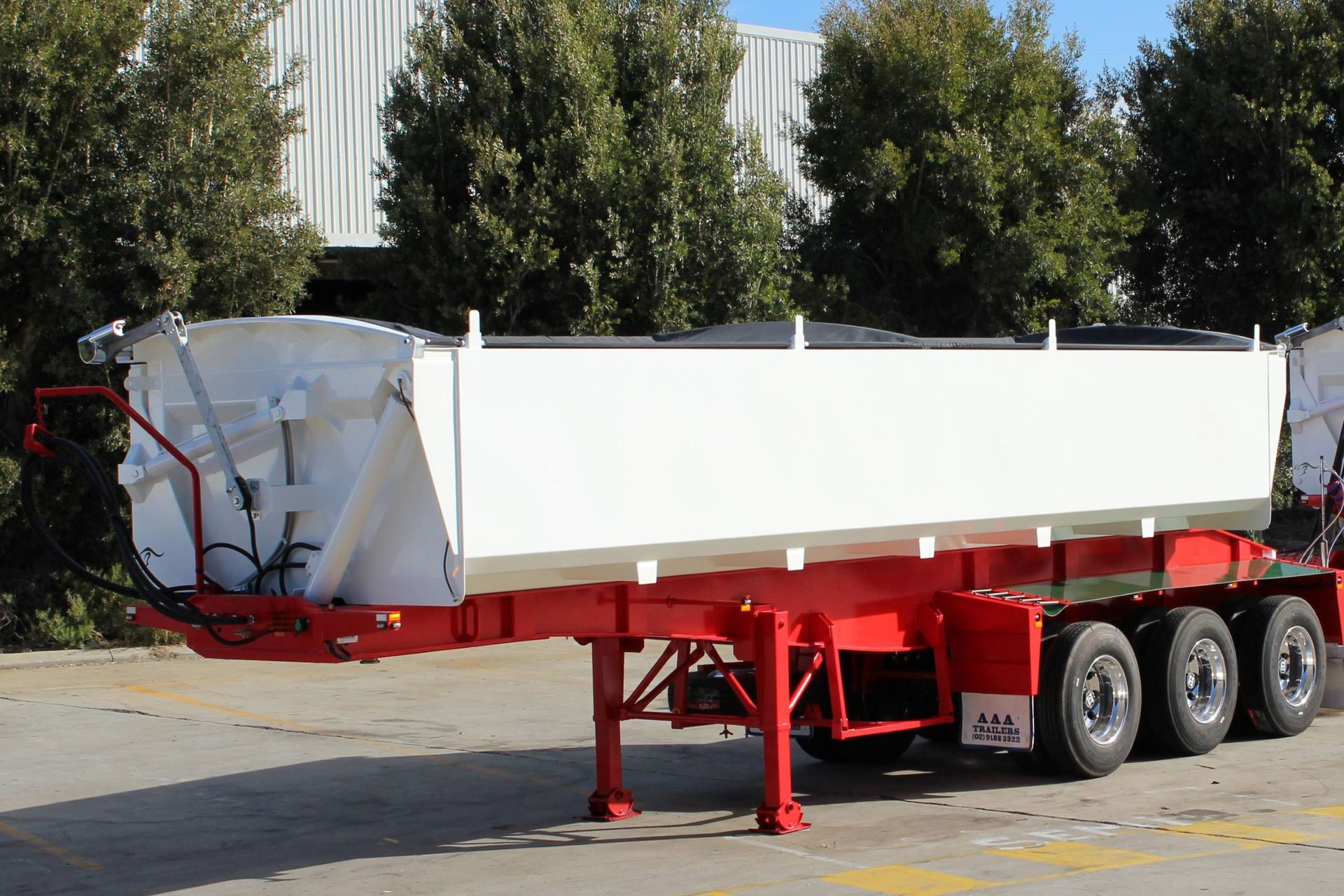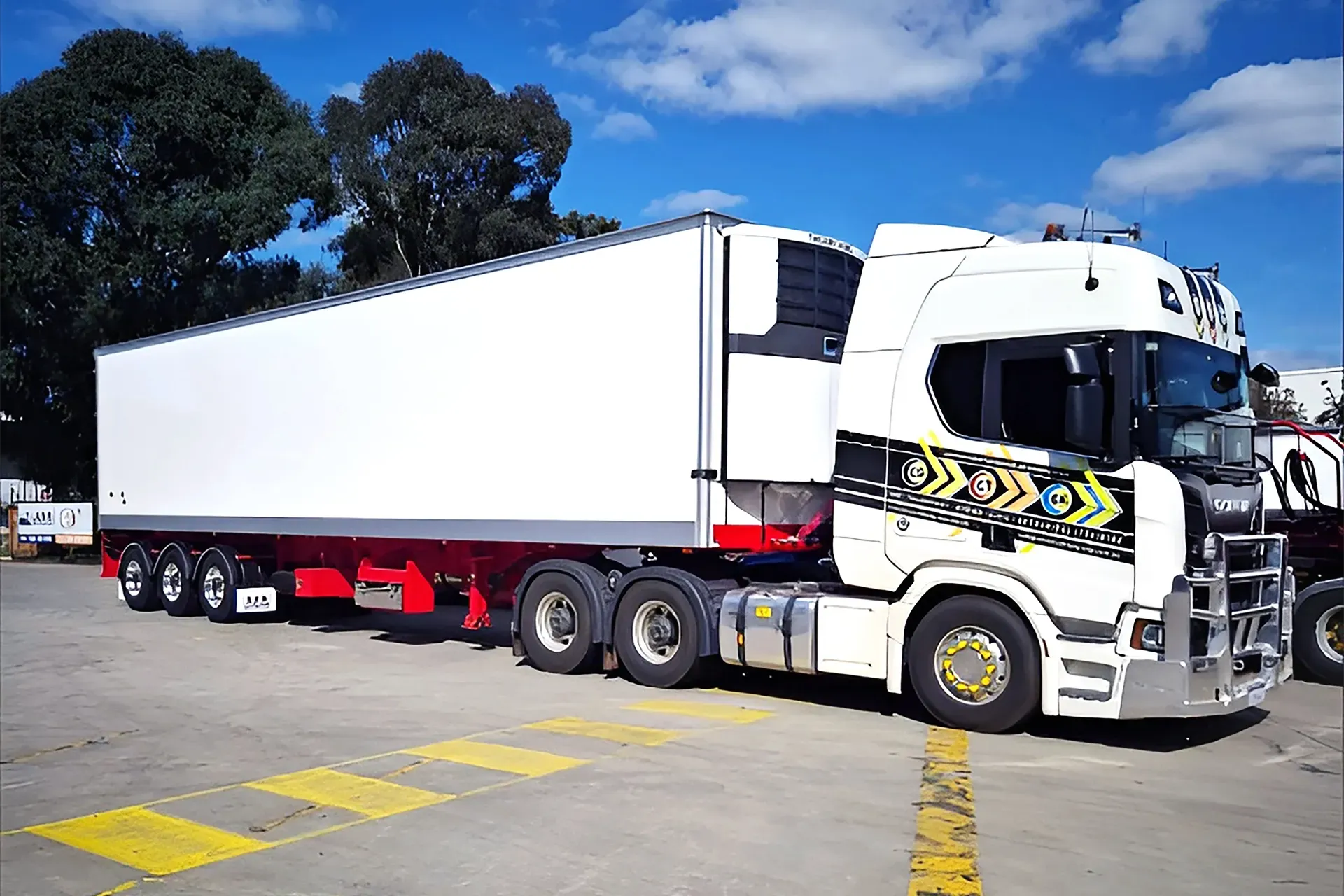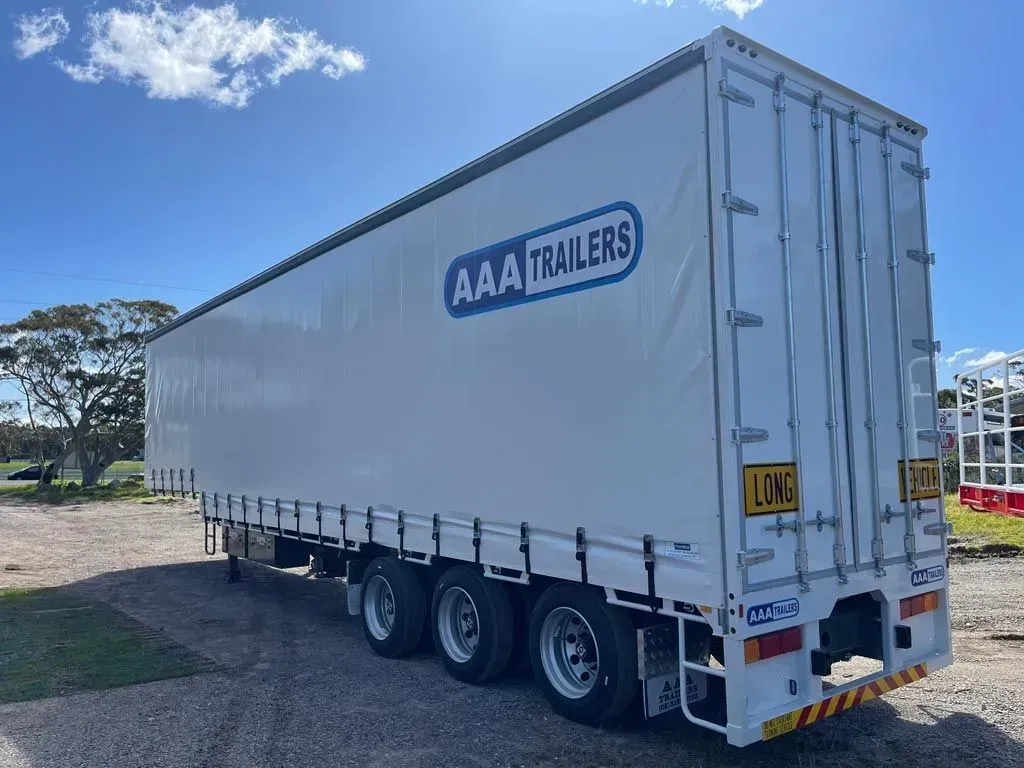Proudly Australian Owned and Operated
When transporting bulk materials like gravel, sand, ore or grain, tipper trailers play a key role in keeping operations efficient and safe. In Australia, the two most commonly used configurations for such tasks are side tippers and back tippers.
Each option has its own advantages depending on the type of material, the terrain, and the job site conditions. While both are built for tough work, more operators are starting to look closely at how side tippers perform in real-world scenarios.
In this article, we explore how side tippers compare to back tippers, particularly in terms of stability, unloading time and wear over time.
1. Greater Stability During Tipping
Stability is one of the biggest advantages of side tippers. They discharge loads to the side, keeping the trailer’s centre of gravity low. In contrast, back tippers lift the trailer body high, which increases the risk of rollovers. That is especially true on uneven road surfaces or with sticky loads.
2. Faster, More Controlled Discharge
Efficiency is essential in bulk haulage trailers, and side tippers save time by unloading quickly without lifting the trailer body as high as a back tipper. They spread material evenly along a road or site, reducing extra work, while back tippers often leave single piles that need further handling.
Faster cycle times let operators complete more trips daily, which is a clear advantage for busy trailers on Australian roads.
3. Safer Operation in Tight Spaces
Some sites in Australia have limited vertical clearance, making back tippers harder and riskier to operate. Side tippers solve this problem because they unload without lifting the body high, which greatly reduces the chance of hitting power lines, bridges, or warehouse ceilings.
That makes them well‑suited for tunnels, urban construction zones, and other confined areas. Side tippers stay low and stable during tipping. Through this, side tippers improve safety and also reduce stress on the chassis, helping prevent costly damage over time.
4. Versatility for Different Materials

Side tippers are highly versatile and handle many bulk materials with ease, and when paired with a secure tarp, they keep loads protected in transit. Sticky loads like wet clay or grain slide out smoothly thanks to the rolling side‑tipping motion. They are also ideal for transporting ore, gravel, grain, and scrap steel.
Meanwhile, back tippers often struggle with hang‑ups that slow down unloading.
5. Reduced Wear and Tear
Side tippers are built to minimise stress on key components, which helps extend the working life of the trailer. Because the tipping motion involves a lower lift, the hydraulic system doesn’t work as hard. The reduced risk of rollovers also helps protect the chassis, suspension and other underbody parts.
For operators working in tough Australian conditions, side tippers can mean fewer breakdowns, less downtime, and lower maintenance costs over time.
6. Efficiency and Cost Savings
Side tippers offer several practical advantages that contribute to greater efficiency and lower costs. Faster turnaround times allow fleets to move more loads in a day, while reduced maintenance needs help cut operating expenses. On top of that, the improved safety of side tipping helps prevent costly incidents on the road or job site, especially in demanding environments.
Key Industries That Benefit from Side Tipper Trailers
Side tippers play a key role in several major industries across Australia, where efficiency and safety are paramount.
Mining
In mining, side tippers transport heavy loads like iron ore and scrap steel across rugged roads. Their stability on uneven terrain reduces delays and lowers rollover risks, making them essential for remote Australian sites.
Construction
The construction sector, including road building and urban development, benefits from the ability of side tippers to unload safely in tight spaces without lifting the body high.
Many models of side tippers minimise the need for a tarp, helping crews load and unload faster and more efficiently.
Agriculture
Agriculture in Australia relies on side tippers to move grain, soil, and fertiliser along rural roads. They handle sticky loads well and often operate efficiently without a tarp, saving time during busy harvest or planting seasons.
For industries hauling dense products like steel, this efficiency directly boosts productivity.
Choosing the Right Trailer for Your Australian Business
When selecting new side tippers, it’s important to match the trailer to the conditions it will face. Rural roads and mining sites benefit from their stability and safety, while urban projects take advantage of their low‑clearance design.
AAA Trailers Australia offers a wide range of durable side tippers for sale, including options with electric roll tarps that speed up loading and unloading, secure materials on the road, and reduce manual effort. Built with strong chassis and durable steel bodies, these trailers are designed to perform reliably in tough Australian conditions.
Choosing AAA Trailers Australia is a long‑term investment in safety, productivity, and lower maintenance. With the right tipper trailers, your business can keep every load moving efficiently—no matter the road, the material, or the job.
Contact us to learn more about side tippers and we will help you select trailers for your business.







